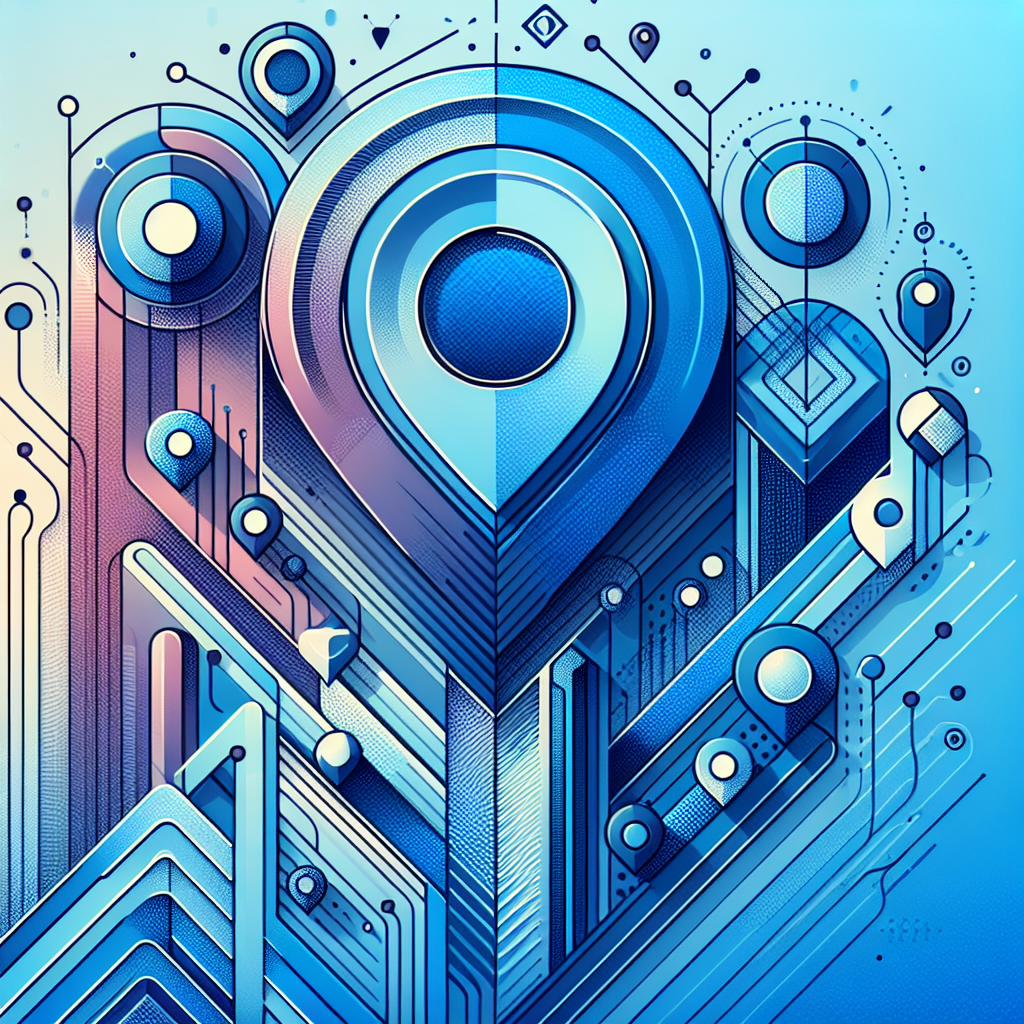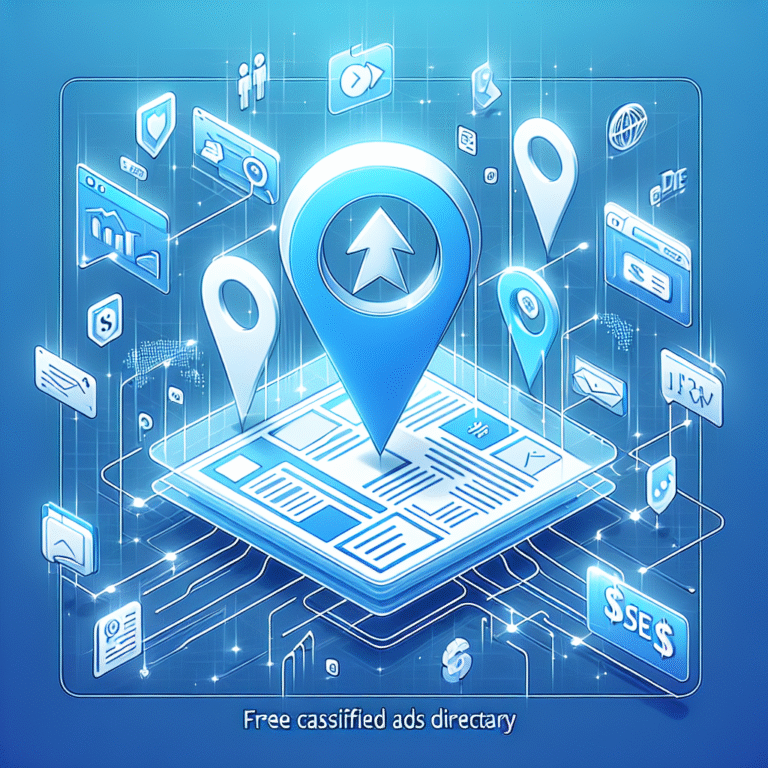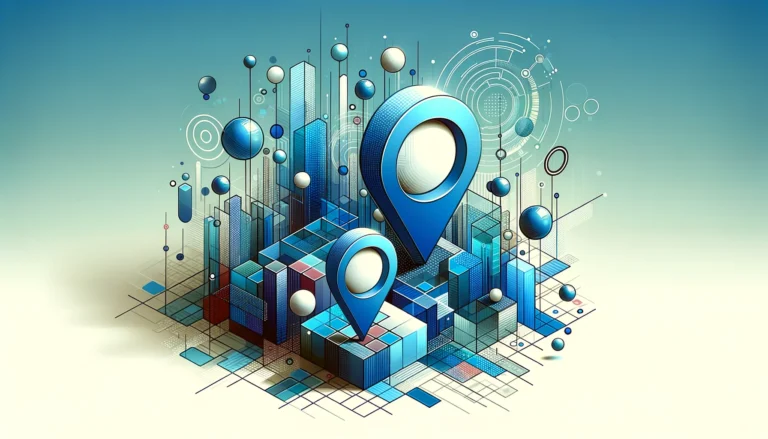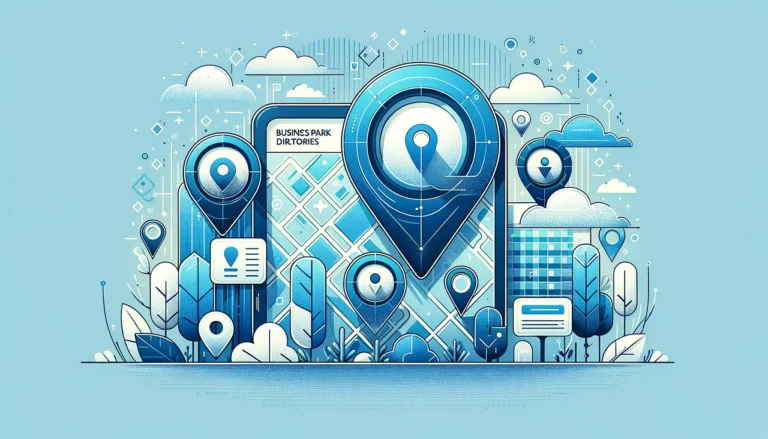Graphic Design Directory: 5 Resources to Find Top Talent
TL;DR
- Finding exceptional graphic design talent requires knowing where to look beyond general job boards
- Dribbble and Behance remain the industry gold standards for discovering portfolio-based talent
- Upwork offers affordability and flexibility for short-term design projects
- Toptal provides premium pre-vetted designers for high-stakes projects
- 99designs gives you multiple design options through their contest-based model
- Effective vetting requires thorough portfolio review, checking references, and conducting skill-specific interviews
- Clear communication and detailed briefs are essential for successful designer collaborations
Introduction to Graphic Design Directories
In today’s visually-driven digital landscape, finding the right graphic designer isn’t just beneficial—it’s critical to your brand’s success. Whether you’re launching a startup, rebranding an established company, or simply need stunning visuals for your marketing campaigns, the designer you choose can make or break your project.
The challenge? The design talent pool is vast and varied. From freelancers working from beach cafés in Bali to seasoned agency professionals, the options can feel overwhelming. This is precisely where graphic design directories come into play.
Think of these directories as curated collections of talent—specialized platforms that connect businesses with designers who have the exact skills needed for specific projects. Unlike general job boards where design talent gets lost in the noise, these directories focus exclusively on creative professionals.
I remember when I first needed to hire a designer for my blog rebrand. I posted on a general freelance site and received dozens of applications—most completely misaligned with what I needed. It wasn’t until a colleague pointed me toward a specialized design directory that I found someone who understood my vision and had the portfolio to prove their capabilities.
Graphic design directories serve multiple purposes in the talent ecosystem:
- They provide designers with dedicated spaces to showcase their portfolios
- They offer businesses specialized search filters to find exact skill matches
- They often include rating systems and reviews to establish trust
- Many provide project management tools to facilitate the working relationship
- Some offer payment protection and dispute resolution services
The best directories go beyond simple listings to create communities where designers can showcase their work, gather feedback, and establish reputations. For businesses, this means access to not just available talent, but to designers whose work has been publicly vetted by peers and previous clients.
But not all directories are created equal. Some focus on high-end talent with premium prices, while others cast a wider net with more varied skill levels and price points. Some specialize in specific design niches like UI/UX, while others cover the full spectrum of graphic design disciplines.
In the sections that follow, we’ll explore five standout resources that consistently deliver top graphic design talent, examining their unique strengths, potential drawbacks, and the types of projects they’re best suited for.
Top 5 Resources to Find Graphic Design Talent
Finding exceptional design talent requires knowing where to look. While countless platforms exist, these five consistently deliver outstanding graphic designers for various project needs and budgets.
Dribbble: The Designer’s Showcase
Dribbble has established itself as the premier destination for google my business listing services providers help optimize visual inspiration and finding top design talent. What began as an invite-only platform has evolved into a robust marketplace where designers showcase their most impressive work.
Why Dribbble stands out:
Dribbble’s strength lies in its visually-driven interface. The platform emphasizes portfolio quality, allowing you to browse designers’ work before making contact. Their “Designer Search” feature lets you filter by location, availability, and specialization—whether you need branding, illustration, UI/UX, or motion graphics.
For businesses seeking specialized talent, Dribbble offers a “Hiring” service that provides additional screening and matching services. This curated approach to finding top graphic design talent saves significant time in the talent search process.
The platform’s community aspect creates a natural quality filter. Since designers are rated and commented on by peers, the cream tends to rise to the top. However, this quality comes at a price—Dribbble talent typically commands premium rates compared to more general freelance platforms.
Best for: Companies with established design budgets looking for standout creative talent, particularly for branding, web design, and UI/UX projects.
Behance: Adobe’s Creative Powerhouse
As part of the Adobe ecosystem, Behance offers an impressive array of design professionals across virtually every creative discipline. While similar to Dribbble in many ways, Behance differentiates itself with more comprehensive portfolio presentations.
What makes Behance valuable:
Behance allows designers to present complete case studies rather than just visual snippets. This gives you deeper insight into a designer’s process, problem-solving abilities, and conceptual thinking—crucial factors when hiring for complex projects.
The platform’s integration with Adobe Creative Cloud means designers often showcase work created with industry-standard tools. Its advanced search functionality allows filtering by tools used, which can be helpful when seeking specific technical expertise.
Behance’s global reach also provides access to international talent that might not be available on more regionally-focused platforms. This can be particularly valuable for projects requiring cultural sensitivity or localization.
The platform’s “Appreciate” system functions as a social proof mechanism, helping identify designers whose work resonates with both peers and clients. Their job board feature facilitates direct hiring for both freelance and full-time positions.
Best for: Projects requiring comprehensive creative solutions where understanding a designer’s full process and approach is important.
Upwork: The Flexible Freelance Marketplace
While not exclusively focused on design, Upwork hosts thousands of talented graphic designers at various career stages and price points. Its structured hiring process and payment protection features make it particularly attractive for businesses new to working with freelancers.
Upwork’s unique advantages:
Unlike portfolio-focused platforms, Upwork emphasizes project-based hiring with detailed job descriptions and proposal systems. This works well for clearly defined design projects with specific deliverables.
The platform offers unparalleled flexibility in budget ranges. You’ll find everything from entry-level designers charging $15/hour to seasoned professionals commanding $150+/hour. This makes it accessible regardless of your budget constraints.
Upwork’s escrow payment system provides security for both parties. Funds are held until deliverables meet approval, reducing risk when working with new designers. Their time-tracking and milestone features also facilitate transparent project management.
The platform’s review system creates accountability, with detailed feedback visible on designers’ profiles. This helps identify professionals who consistently deliver quality work on time and within budget.
However, the quality variance can be significant, requiring more thorough vetting compared to curated platforms like Dribbble or Toptal.
Best for: Businesses with well-defined design projects and varied budget levels, particularly those needing ongoing or repeated design work.
Toptal: Premium Pre-Vetted Talent
Toptal distinguishes itself with a rigorous screening process that claims to accept only the top 3% of creative talent. This exclusivity creates a pool of highly skilled designers available for complex, high-stakes projects.
Toptal’s elite approach:
The platform’s intensive vetting includes portfolio reviews, skill assessments, live screenings, and test projects. This front-loaded quality assurance means less time spent interviewing unsuitable candidates.
Toptal specializes in matching businesses with precisely the right designer for specific needs. Their personalized matching service begins with a consultation to understand your project requirements, brand voice, and team dynamics.
While significantly more expensive than general freelance platforms, Toptal offers a “no-risk trial period” where clients can work with designers for a short time before committing. This reduces the financial risk associated with premium rates.
The platform excels at providing design talent for specialized needs like google my business listing pending review time complex UX research, enterprise-level design systems, or sophisticated brand identity projects requiring deep strategic thinking.
Best for: Enterprise clients, funded startups, and established brands with complex design needs and appropriate budgets.
99designs: The Contest Approach
99designs takes a fundamentally different approach to design talent acquisition through its contest-based model. Rather than hiring a single designer, clients create briefs that multiple designers respond to with completed concepts.
Why consider 99designs:
The platform’s contest model provides variety, with dozens of designers submitting concepts for your project. This works exceptionally well for projects like logo design, where seeing multiple directions can clarify your preferences.
For businesses uncertain about their exact design needs, 99designs offers a way to explore multiple visual directions simultaneously. This can be particularly valuable for early-stage startups still defining their brand identity.
Beyond contests, 99designs has evolved to offer direct hiring of designers through their “Find a Designer” feature. This hybrid approach provides flexibility based on project needs.
The platform offers tiered pricing packages that determine the experience level of participating designers. Higher tiers attract more established professionals, while entry-level packages provide affordable options for smaller businesses.
One significant advantage is 99designs’ money-back guarantee if you’re not satisfied with any of the submitted designs—reducing the risk associated with creative services.
Best for: Brand identity projects (especially logos), packaging design, and situations where exploring multiple creative directions is beneficial.
When evaluating these platforms, consider your specific project needs, budget constraints, and how much time you can dedicate to the designer selection process. The most efficient platform is often the one that best aligns with your particular requirements rather than the one with the largest talent pool.
How to Vet and Hire Graphic Designers
Finding talented designers is only half the battle—effectively vetting them ensures you select someone who can deliver exactly what your project needs. This systematic approach to evaluation can save significant time and resources.
Reviewing Portfolios Effectively
A designer’s portfolio offers the most direct evidence of their capabilities, but knowing how to evaluate it requires looking beyond aesthetics.
Start by assessing relevance rather than just visual appeal. Has the designer worked on projects similar to yours in terms of industry, scope, or style? A beautiful portfolio that lacks relevant experience might indicate a steep learning curve for your specific needs.
Look for versatility balanced with consistency. Can the designer adapt to different styles while maintaining quality? Or, if they have a distinctive style, does it align with your brand vision? I once hired a designer whose portfolio looked impressive but was so stylistically rigid that they struggled to adapt to our brand guidelines.
Pay special attention to the case studies or project descriptions. Do they demonstrate strategic thinking and problem-solving, or focus solely on visual execution? The best designers explain the “why” behind their design choices, not just the “how.”
Assess technical proficiency relevant to your project needs. For print projects, look for understanding of production requirements. For digital work, evaluate their grasp of interactive design principles and technical constraints.
Don’t ignore the details—typography choices, color harmony, compositional balance, and attention to minute elements often separate good designers from exceptional ones.
Checking Client Reviews and Testimonials
While portfolios show capability, reviews reveal reliability and work dynamics.
Look beyond star ratings to the substance of reviews. Specific comments about communication, meeting deadlines, and handling feedback provide more valuable insight than generic praise.
Pay attention to how designers respond to critical feedback in reviews. Do they engage professionally or defensively? This often indicates how they’ll handle your feedback during the project.
When possible, google my business listing not showing up troubleshooting tips reach out to previous clients directly. Most will be willing to share their experience, often providing candid insights not captured in public reviews.
Watch for patterns in feedback rather than focusing on isolated comments. If multiple clients mention the same strengths or weaknesses, these likely represent consistent traits.
Consider the recency of reviews. A designer with glowing reviews from five years ago but nothing recent might indicate inconsistent quality or availability issues.
Conducting Effective Interviews
The interview phase provides crucial insights into communication style and working approach that portfolios and reviews can’t reveal.
Prepare project-specific questions that reveal process rather than just technical skills. Ask how they would approach your particular project, watching for thoughtful, strategic responses versus generic answers.
Discuss their design process in detail. How do they handle research, concepting, revisions, and final delivery? Look for a structured approach that incorporates client feedback at appropriate stages.
Present a realistic scenario from your project and ask how they would handle it. Their response reveals problem-solving abilities and practical application of their skills.
Assess communication clarity during the interview itself. If you’re struggling to understand them during this initial conversation, communication challenges will likely persist throughout the project.
Don’t hesitate to request a paid test project for final candidates. Even a small, defined task can reveal how they handle direction, meet deadlines, and respond to feedback—all critical to project success.
Inquire about their availability and working hours, especially for remote designers in different time zones. Misaligned schedules can create significant project delays despite a designer’s technical capabilities.
When vetting graphic designers, remember that technical skill alone isn’t enough. The most successful designer-client relationships combine appropriate technical abilities with compatible communication styles and aligned expectations. Take time during this phase—rushing the selection process often leads to project delays and revisions that far exceed the time invested in proper vetting.
Tips for Working with Freelance Graphic Designers
Establishing a productive relationship with graphic designers requires more than just finding talent—it demands intentional communication, clear expectations, and efficient collaboration systems. These practices maximize creative output while minimizing friction.
Clear Communication Practices
Effective communication forms the foundation of successful design projects. Without it, even the most talented designers struggle to deliver satisfactory results.
Start with a comprehensive creative brief that goes beyond basic requirements. Include brand guidelines, audience information, competitive context, and specific goals for the design. The more context designers have, the more targeted their creative solutions will be.
Establish preferred communication channels and response timeframes upfront. Some projects benefit from real-time collaboration tools like Slack, while others work better with documented feedback in project management systems. Whatever you choose, consistency prevents information from getting lost across multiple platforms.
When providing feedback, be specific rather than general. Rather than saying “I don’t like the layout,” explain exactly what isn’t working: “The headline gets lost because it competes with the image.” Specific feedback leads to targeted solutions.
Use visual references whenever possible. Sharing examples of what you like (and don’t like) creates a common visual language and reduces misinterpretation. I’ve found that creating a shared inspiration board at the project start dramatically improves alignment throughout the process.
Schedule regular check-ins at predetermined milestones rather than requesting constant updates. This gives designers uninterrupted creative time while ensuring the project stays on track.
Remember that design is both objective and subjective. Distinguish between feedback based on strategic objectives (“This doesn’t communicate our value proposition”) versus personal preference (“I don’t like orange”). The former takes priority in professional design relationships.
Setting Expectations and Boundaries
Clear expectations prevent most common project frustrations before they begin.
Define scope parameters precisely, including deliverable formats, dimensions, file types, and the exact number of concepts and revision rounds included. This prevents scope creep and ensures designers can price their services appropriately.
Establish realistic timelines that account for the creative process. Quality design requires thinking time—rushing this phase invariably leads to superficial solutions. Build in buffer time for unexpected revisions or technical challenges.
Clarify ownership and usage rights for all design assets. Will you own full copyright, or is the designer retaining certain rights? Will source files be provided? These questions are better addressed before work begins than after completion.
Discuss how additional requests beyond the original scope will be handled. Having an established hourly rate for extras prevents awkward conversations when inevitable project expansions occur.
Create a clear approval process with designated decision-makers. Projects frequently derail when feedback comes from multiple stakeholders with conflicting opinions. Establish a single point of approval to maintain project momentum.
Respect designers’ expertise while maintaining your business objectives. The most successful projects balance client knowledge of their business with the designer’s visual problem-solving abilities. Neither party should dominate the relationship.
Using Project Management Tools
The right collaboration tools streamline workflow and documentation, reducing misunderstandings and creating accountability.
Implement a centralized project management system where briefs, assets, feedback, and approvals are documented. Options range from design-specific platforms like Figma and InVision to general project tools like Asana, Trello, or Monday.
Use version control to track design iterations. This prevents confusion about which version is current and provides a history of the design evolution—particularly valuable if you need to revisit earlier concepts.
Establish feedback protocols within your tools. Features like commenting on specific elements rather than providing general feedback in emails dramatically increases precision and reduces revision cycles.
Consider using time-tracking integration for hourly projects. This creates transparency around where design time is being invested and helps identify when projects begin exceeding original estimates.
google my business listing disappeared reasons how to fix problems often requires clear documentation, and the same applies to design projects. Maintain an accessible repository of all project assets, including fonts, images, and source files, to prevent delays when materials need to be located quickly.
Utilize collaborative proofing tools that allow for in-context feedback on designs. These eliminate the confusion that often results from trying to describe visual elements in text-only communications.
Working successfully with graphic designers ultimately comes down to treating the relationship as a partnership rather than a service transaction. The best results emerge when clients provide clear direction while respecting the designer’s creative process, and when designers balance artistic expression with business objectives.
FAQs About Finding Graphic Design Talent
What are the best platforms to find graphic designers?
The best platforms depend on your specific needs and budget. Dribbble and Behance excel for finding portfolio-reviewed talent with strong visual skills. Upwork offers a wide range of price points and flexibility. Toptal provides premium pre-vetted designers for complex projects. 99designs works well when you want multiple design options through their contest model. Specialized platforms typically yield better results than general job boards.
How to hire a freelance graphic designer?
Start by defining your project requirements in detail, including deliverables, timeline, and budget. Search relevant platforms and review portfolios for style alignment and relevant experience. Check reviews and testimonials from previous clients. Interview promising candidates, discussing their process and approach to your specific project. Consider a paid test project before committing to larger work. Finally, formalize the agreement with a contract that clearly outlines deliverables, revision limits, timeline, payment terms, and rights to the final work.
What should I look for in a graphic designer’s portfolio?
Evaluate relevance to your project needs rather than just aesthetic appeal. Look for technical proficiency in your required mediums (print, digital, etc.). Assess versatility or stylistic consistency depending on your project needs. Examine attention to detail in typography, color harmony, and composition. Review case studies for strategic thinking and problem-solving approaches. Check for results-oriented work that achieved business objectives, not just visually pleasing designs. Finally, ensure the portfolio is current, as design skills and trends evolve quickly.
How much does it cost to hire a graphic designer?
Graphic design costs vary tremendously based on experience level, project complexity, geographic location, and platform. Entry-level freelancers might charge $25-50 per hour, mid-level designers $50-100 per hour, and senior designers or specialists $100-150+ per hour. Project-based pricing ranges similarly, with logo design spanning from $300 to $10,000+ depending on the designer’s expertise and process depth. Platforms like Upwork offer the widest range of price points, while Toptal focuses exclusively on premium talent with corresponding rates. Always balance cost considerations with quality requirements for your specific project.
What tools do freelance graphic designers use?
Most professional graphic designers use Adobe Creative Cloud applications, particularly Photoshop, Illustrator, and InDesign for core design work. For UI/UX design, Figma and Sketch have become industry standards, with Adobe XD as another popular option. Procreate is widely used for digital illustration, especially on iPad. Project management often happens through platforms like Asana, Trello, or Monday, while collaboration might occur through Slack, Microsoft Teams, or specialized design feedback tools like InVision or Miro. When hiring, ensure designers are proficient in the specific tools relevant to your project requirements.
How to communicate effectively with a graphic designer?
Effective communication starts with a comprehensive creative brief that includes project goals, target audience, brand guidelines, and specific requirements. Use visual references to illustrate preferences and concepts that might be difficult to explain verbally. Provide specific, constructive feedback rather than vague directions. Focus on objectives rather than subjective preferences when possible. Establish regular check-in points and clear approval processes. Respect the designer’s expertise while clearly communicating business constraints. Use collaborative tools that allow for visual feedback directly on designs. Finally, consolidate feedback from multiple stakeholders before sending to avoid contradictory direction.
What are the benefits of using a graphic design directory?
Graphic design directories offer several advantages over general job boards. They provide curated access to design-specific talent, saving time in the screening process. Many include portfolio viewing capabilities for immediate skill assessment. They often feature specialized search filters for finding exact skill matches like google my business listing tips to optimize for local search optimization expertise. Design directories frequently include review and rating systems specifically relevant to design projects. Many offer built-in collaboration and project management tools designed for visual work. Some provide payment protection and dispute resolution services specifically tailored to creative projects. Overall, they create more efficient matching between design needs and appropriate talent.
How to evaluate a graphic designer’s experience?
Look beyond years in the field to the quality and relevance of past work. Review their client history for experience in your industry or with similar projects. Examine case studies for their process depth and problem-solving approaches. Check references from previous clients, asking about reliability, communication, and ability to meet deadlines. Assess their technical proficiency with relevant tools and platforms. Consider their continuing education and awareness of current design trends. Evaluate their ability to articulate design decisions and strategic thinking during interviews. For critical projects, consider assigning a small paid test project to directly evaluate their skills and working style.
What are the top graphic design trends to watch for?
Current design trends include bold typography with experimental and custom fonts taking center stage in branding. Maximalism is returning with rich textures, patterns, and layered elements replacing minimalist approaches. Motion design integration is becoming standard even in traditionally static mediums, with animated logos and kinetic typography. Data visualization is evolving with more engaging, interactive approaches. Authentic photography and illustrations are replacing generic stock imagery. Accessibility-focused design is gaining prominence, ensuring content is usable by people with various abilities. Anti-design and brutalism continue to influence brands seeking to stand out from conventional aesthetics. However, the best designers adapt trends to business objectives rather than following them blindly.
How to ensure copyright safety when hiring a graphic designer?
Protect your intellectual property by using written contracts that explicitly transfer copyright ownership of all deliverables to your business. Specify that designs must be original work, not derivative of existing copyrighted material. Include provisions requiring designers to obtain proper licenses for any stock elements used. For logos and key brand assets, consider trademark searches before finalizing designs. Request all source files upon project completion for future modifications. Include confidentiality clauses for sensitive projects. Be wary of extremely low-priced services, as these sometimes involve unauthorized use of existing designs. When working through platforms, check their standard terms regarding intellectual property rights, as these vary significantly between services.
Conclusion
Finding and working with top graphic design talent doesn’t have to be a daunting process. By leveraging specialized directories and platforms like Dribbble, Behance, Upwork, Toptal, and 99designs, you can connect with professionals whose skills align perfectly with your project needs.
Remember that the most successful design relationships combine thorough vetting with clear communication and well-structured collaboration. Take time to review portfolios critically, check references thoughtfully, and establish comprehensive project parameters from the start.
The right designer doesn’t just execute your vision—they enhance it through their expertise and creative problem-solving. By using the resources and approaches outlined in this guide, you’ll be well-equipped to find design partners who can truly elevate your brand through compelling visual communication.
What’s your next design project? The perfect creative talent is out there waiting to bring it to life.









